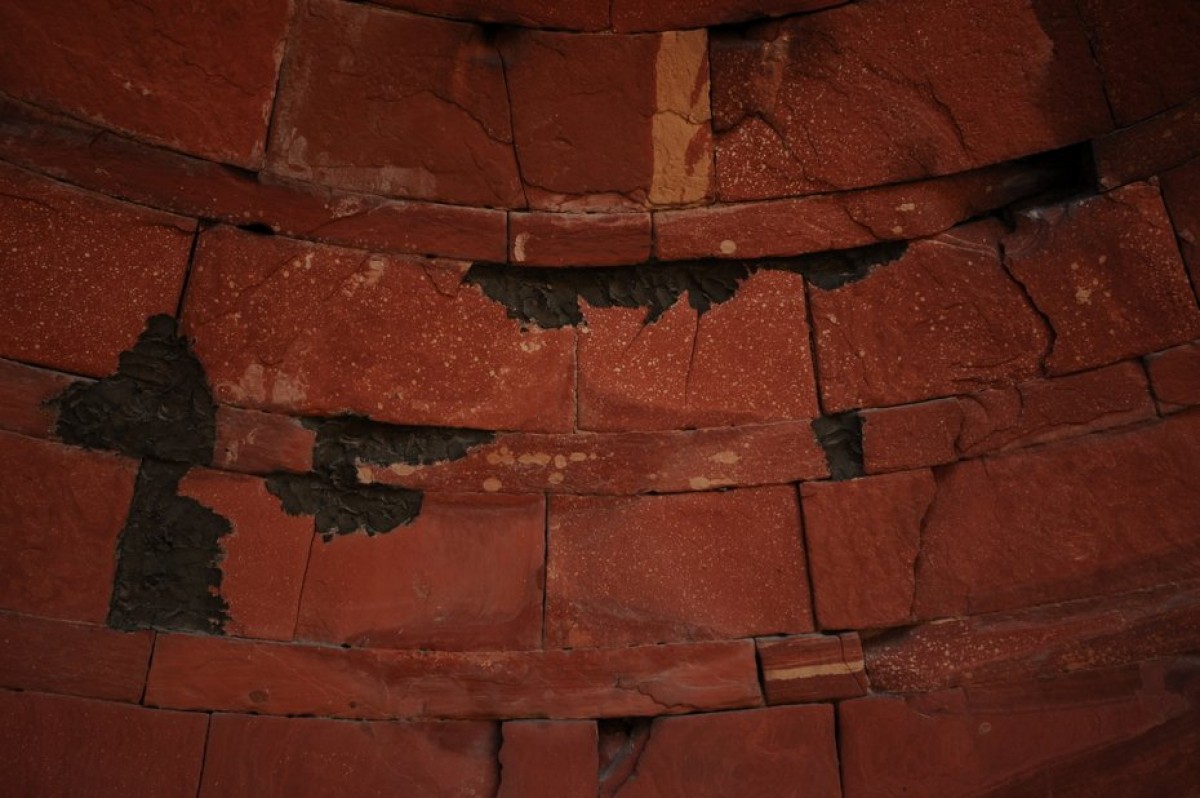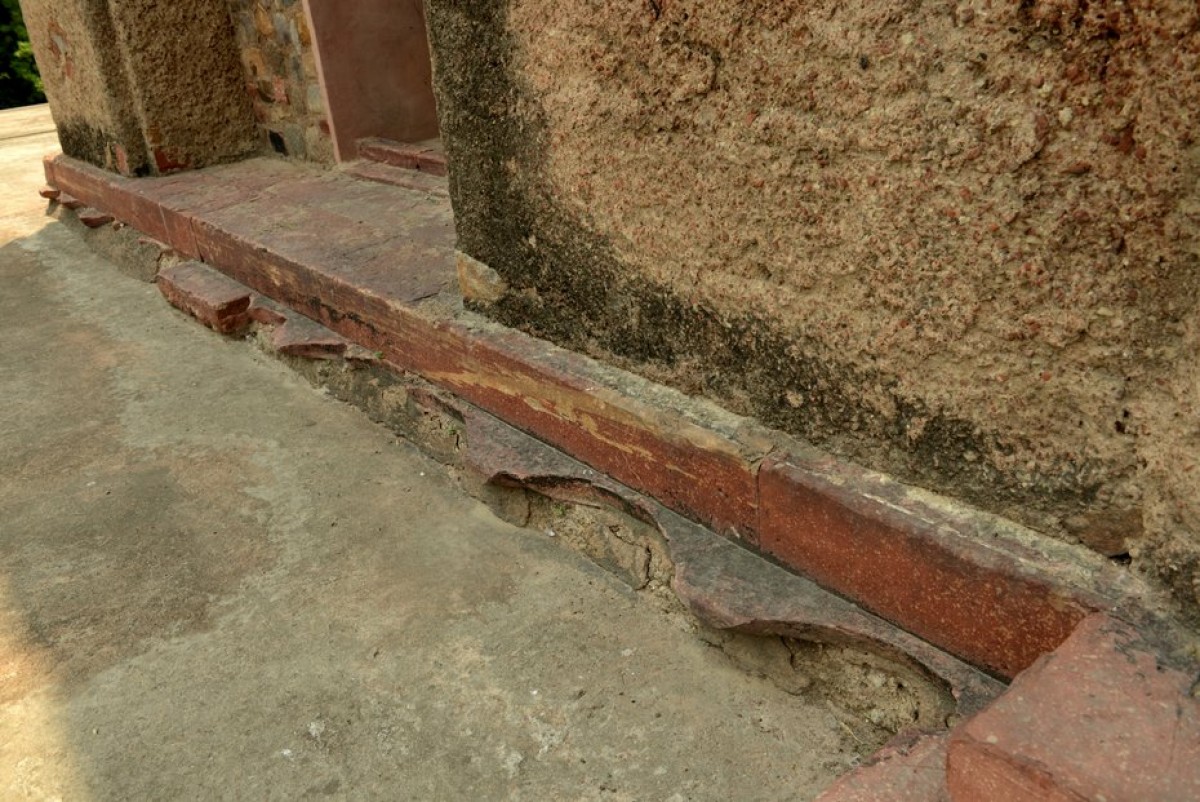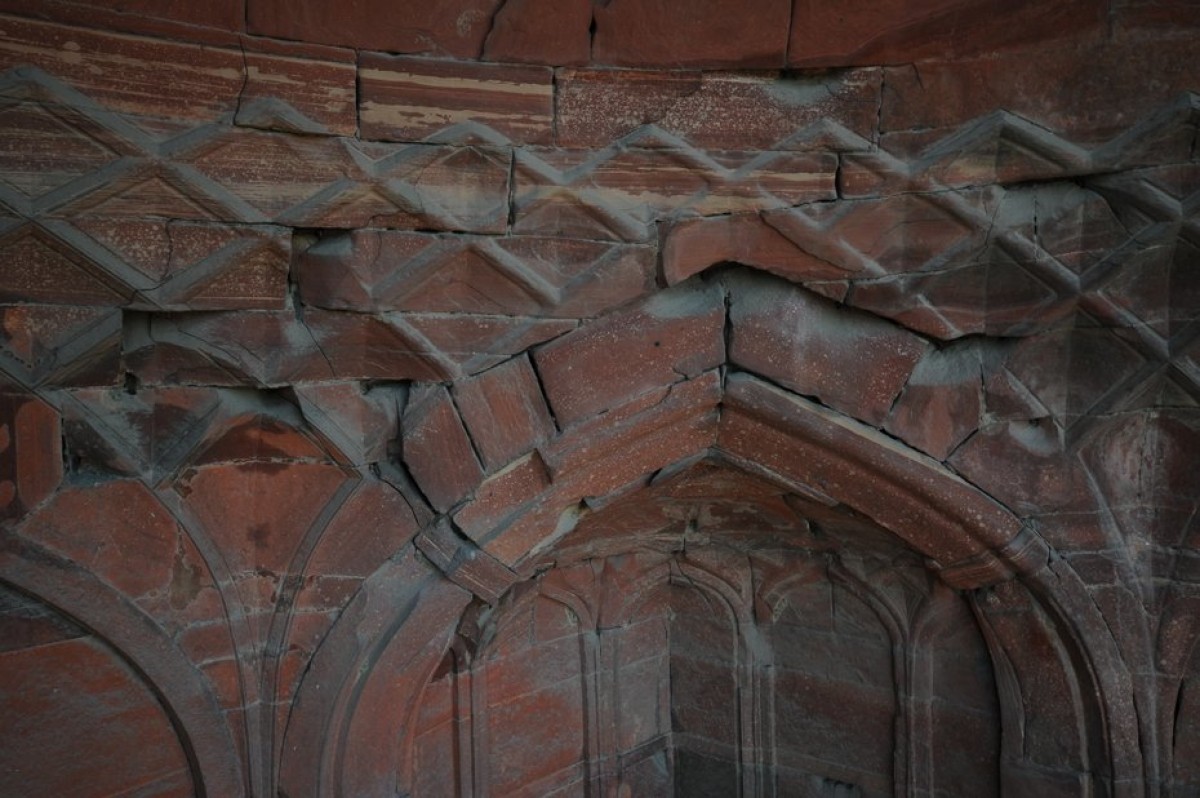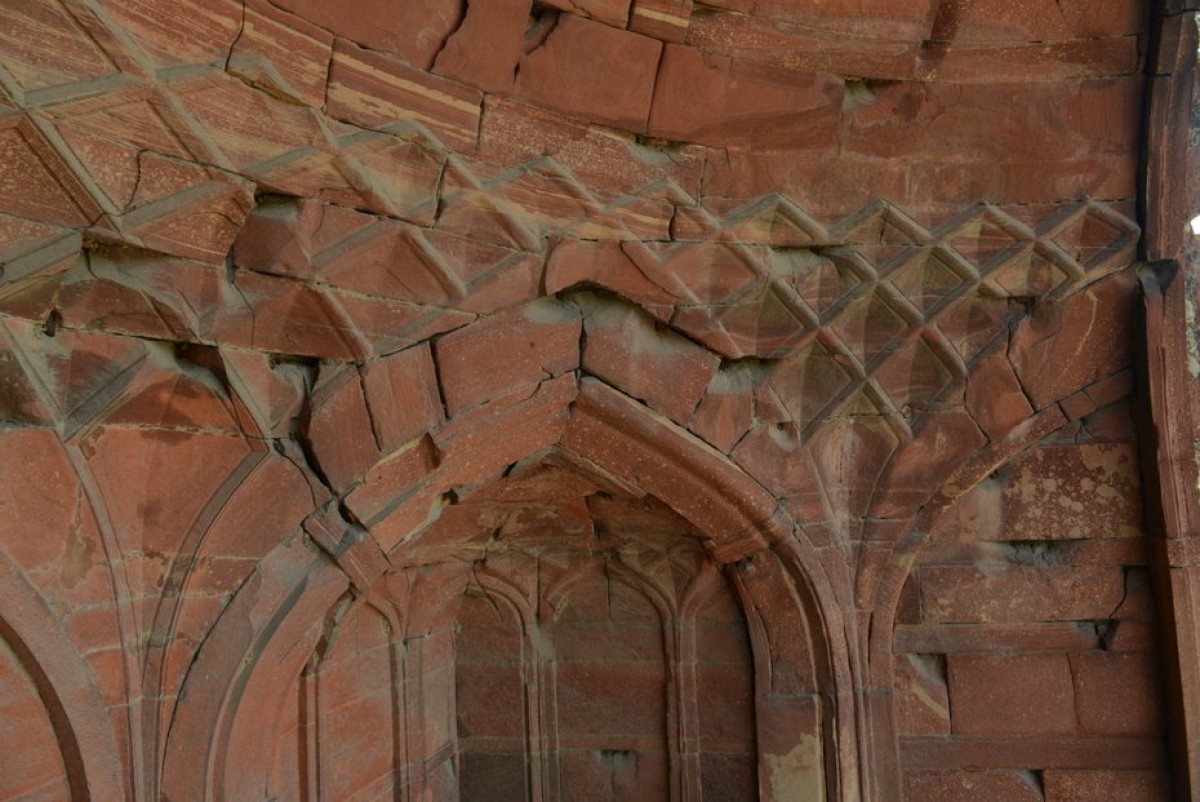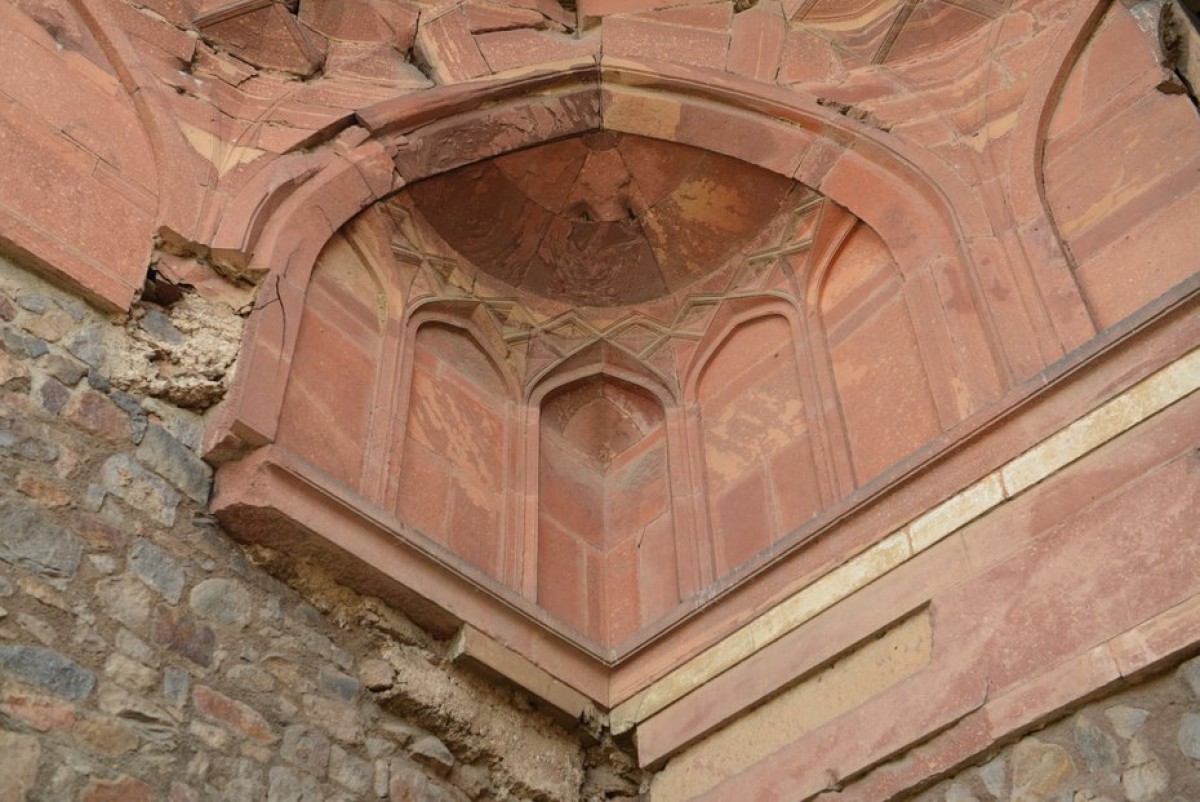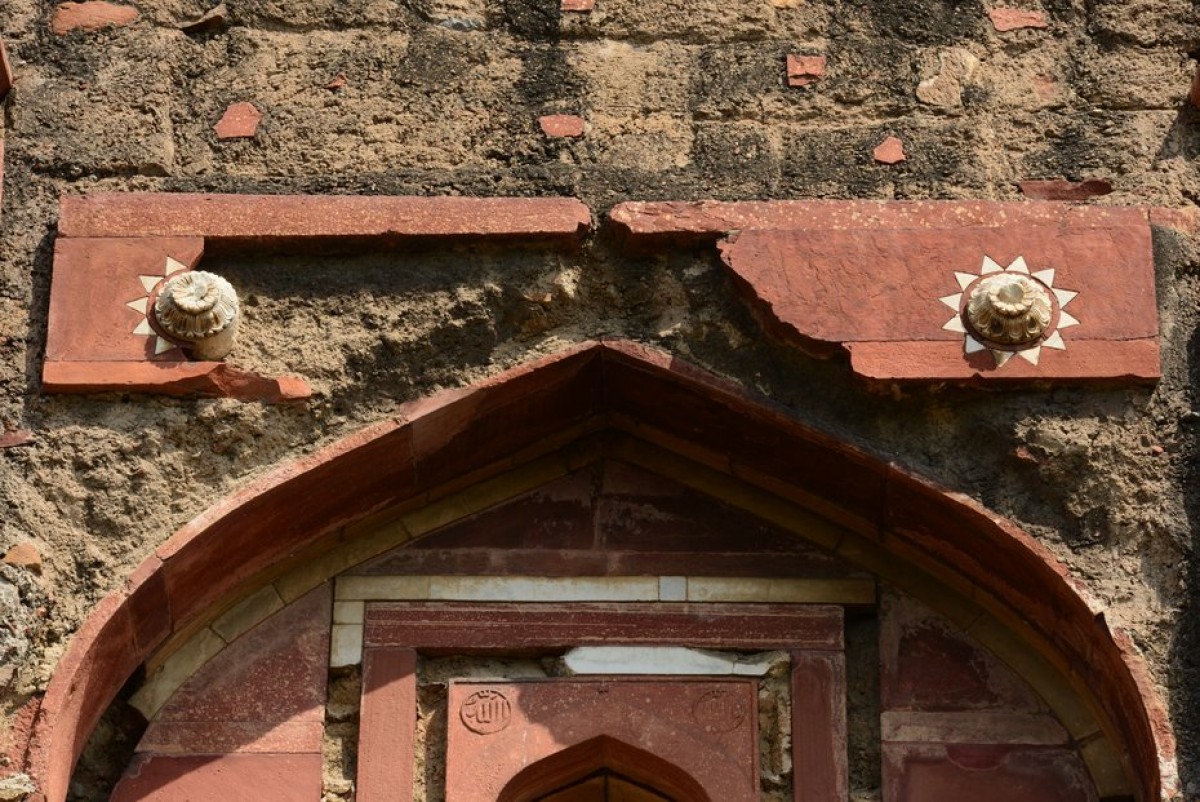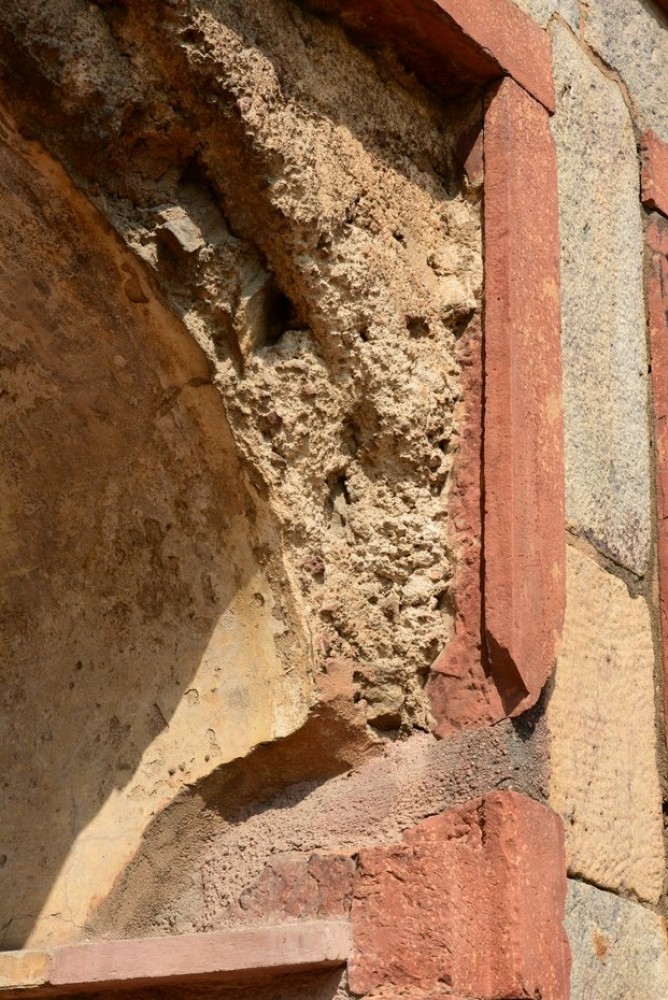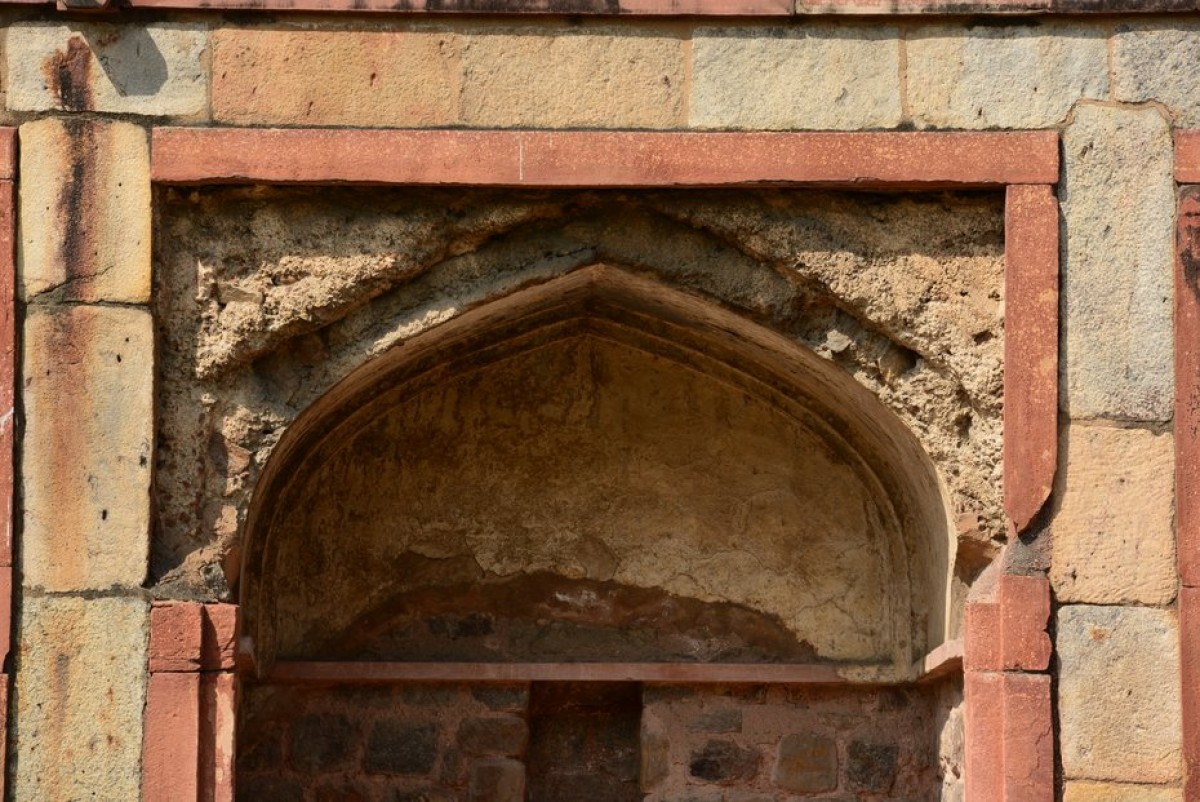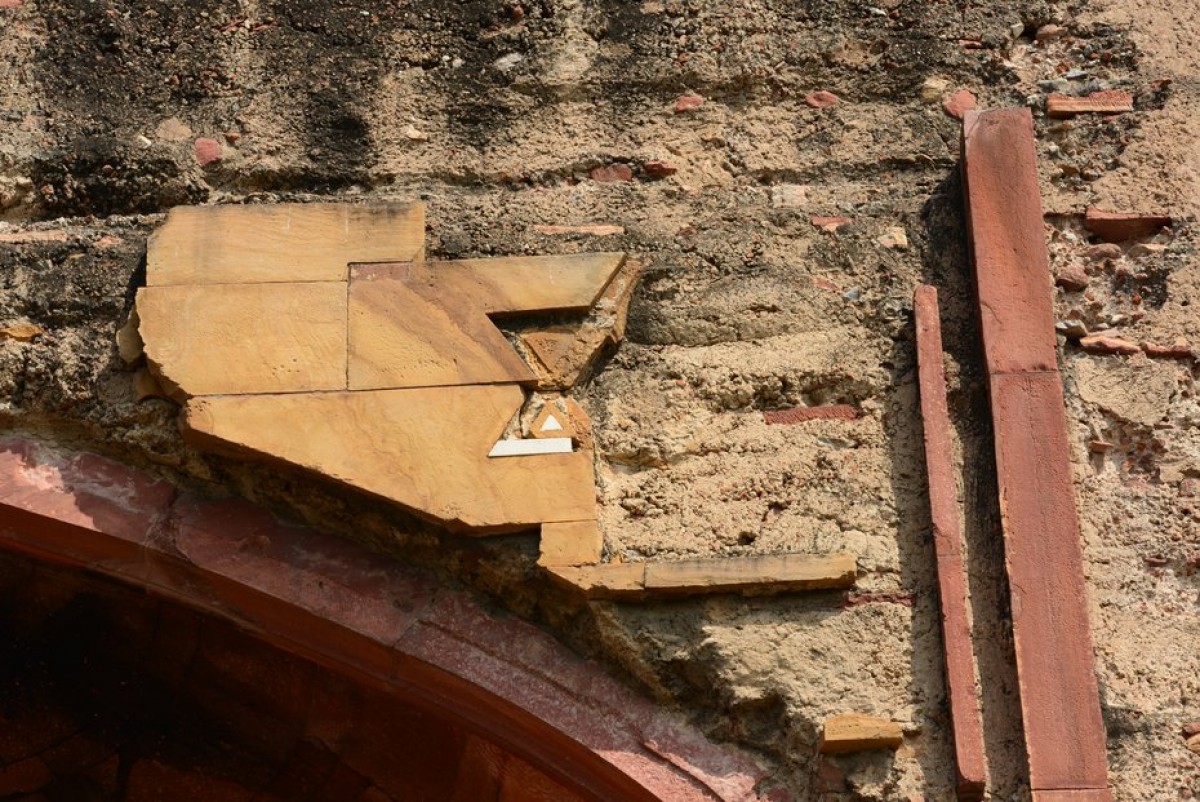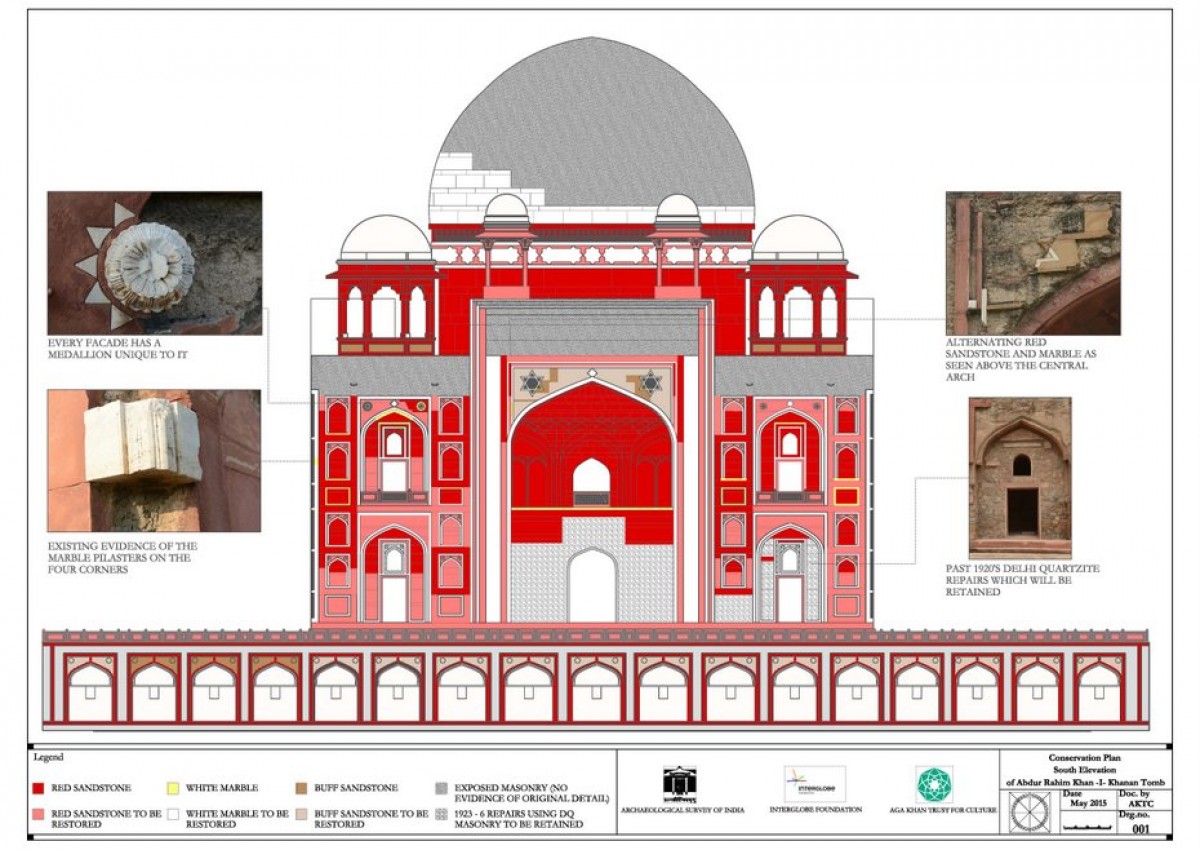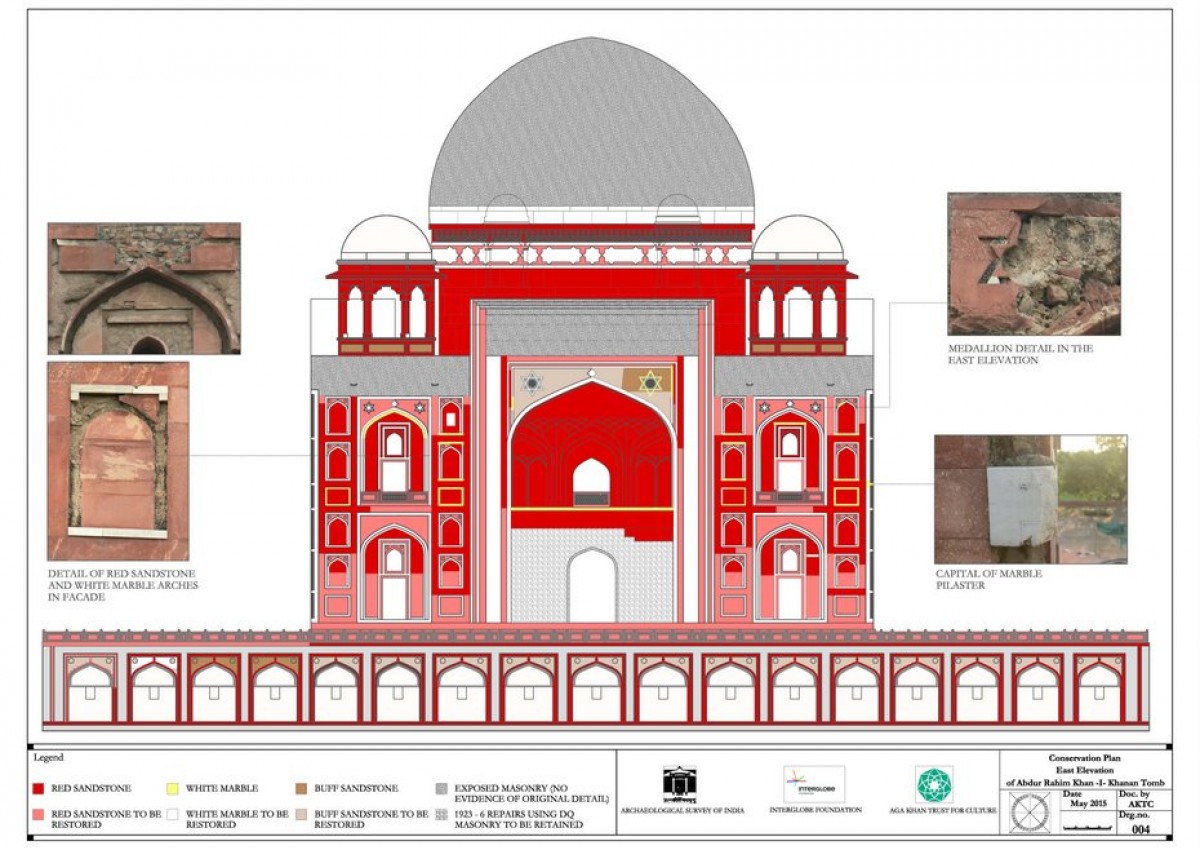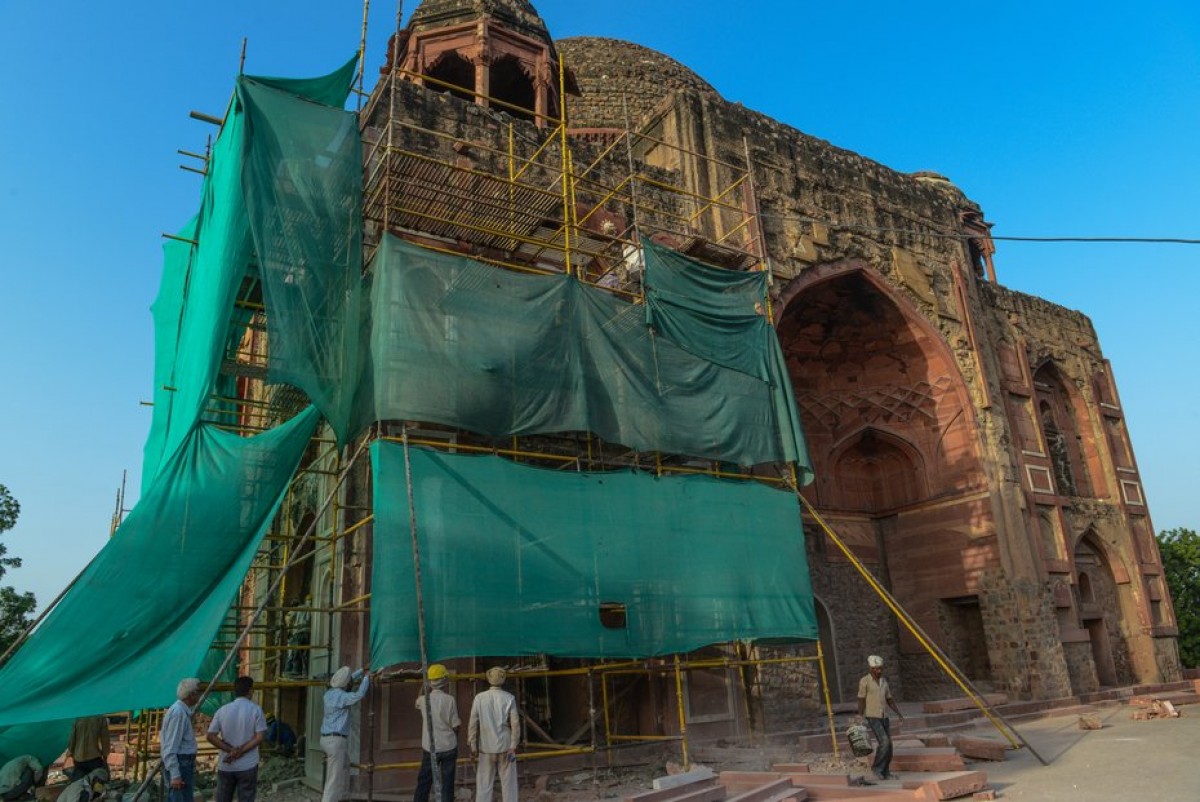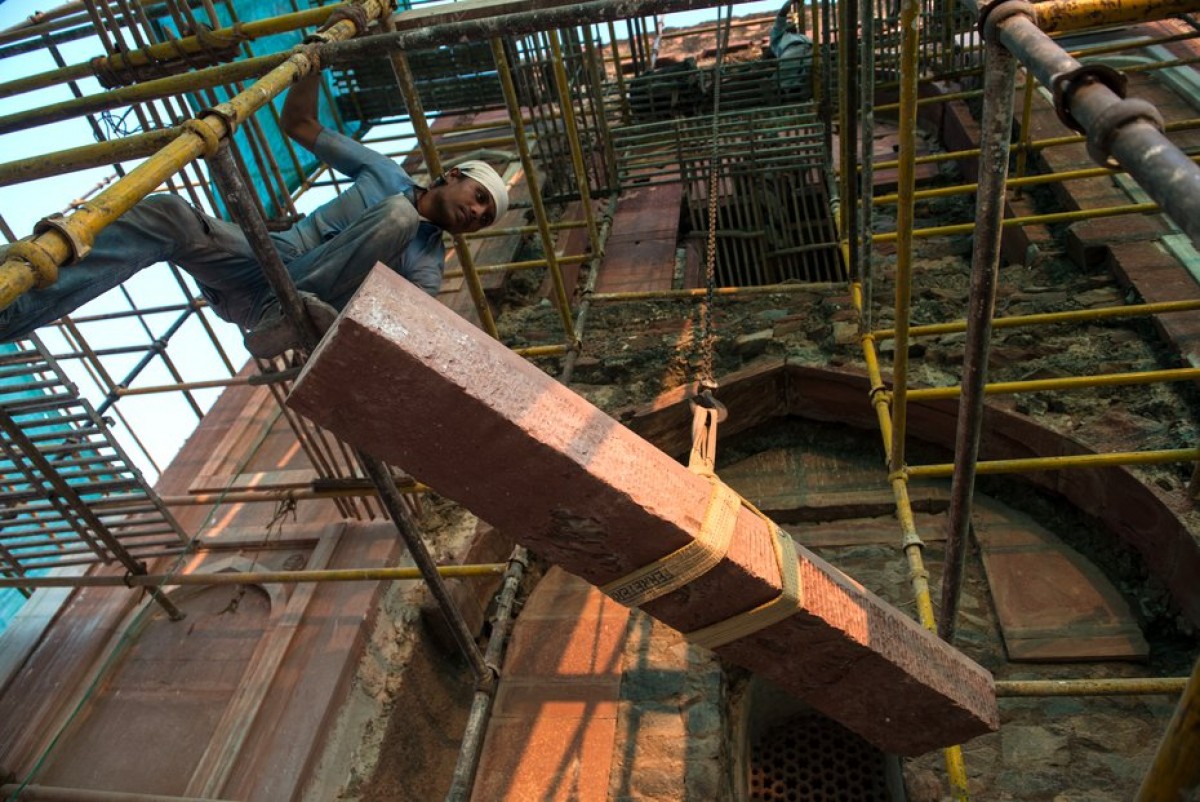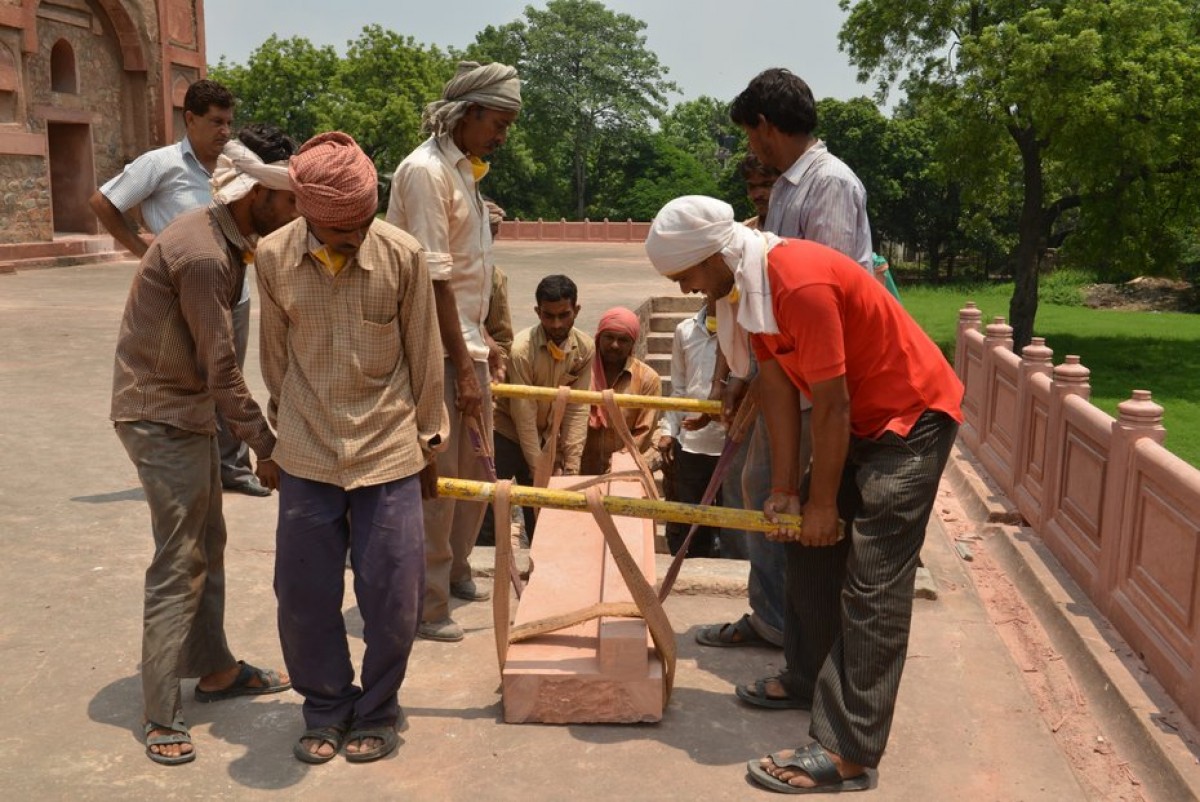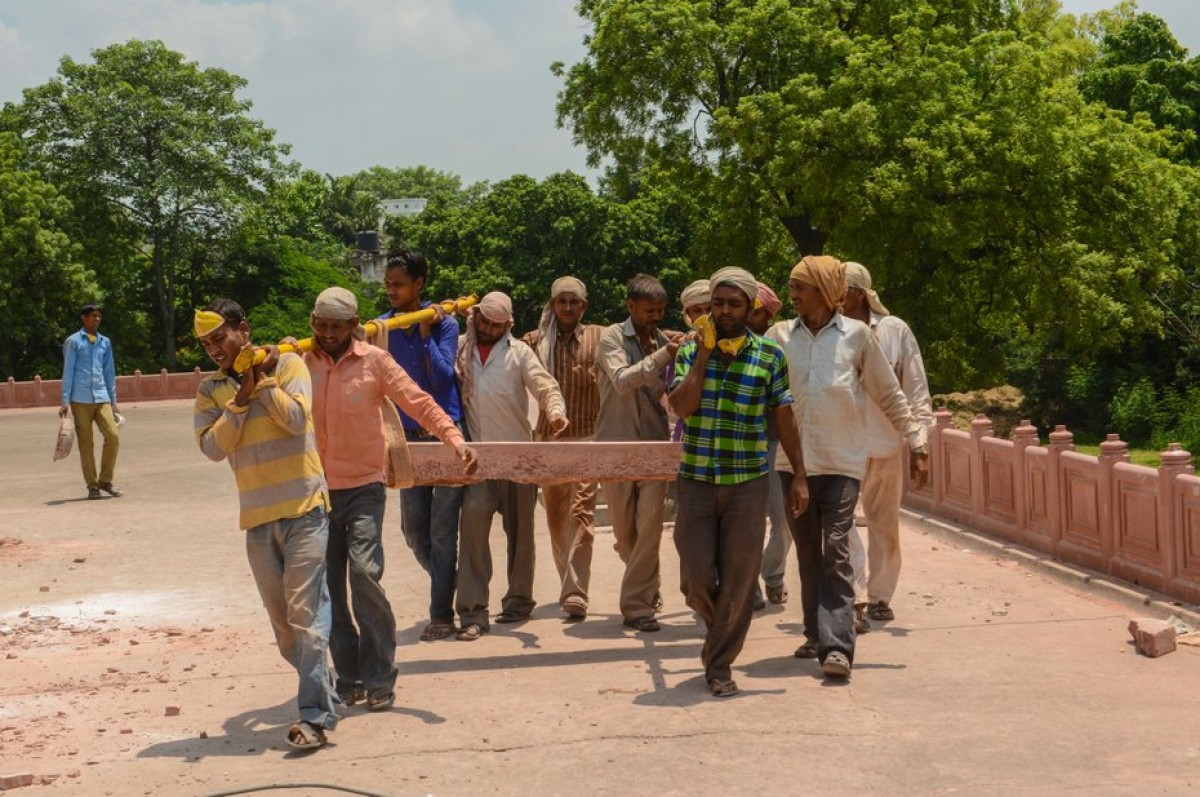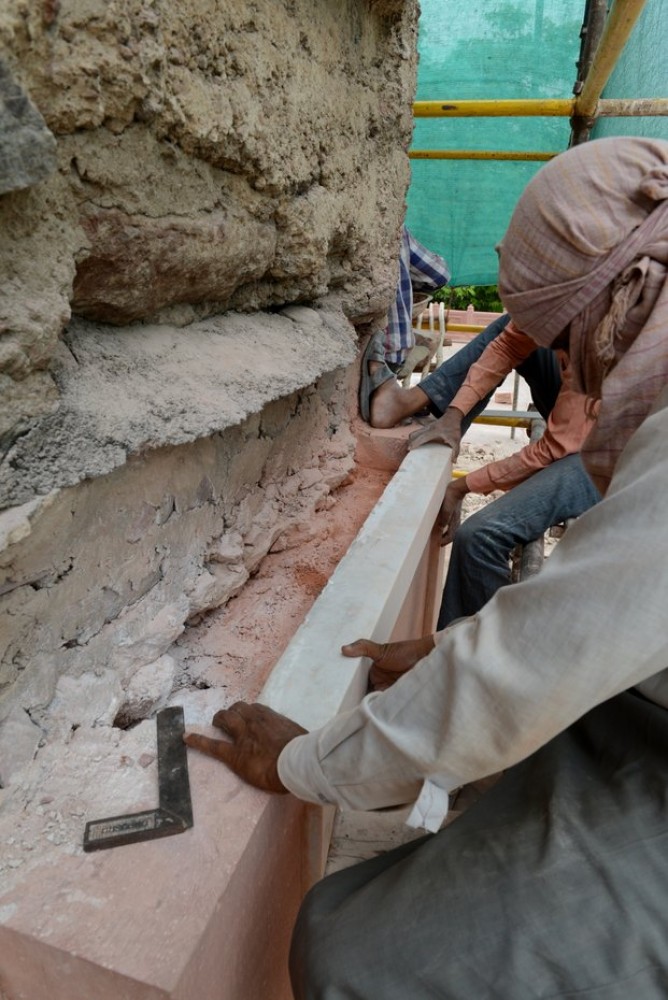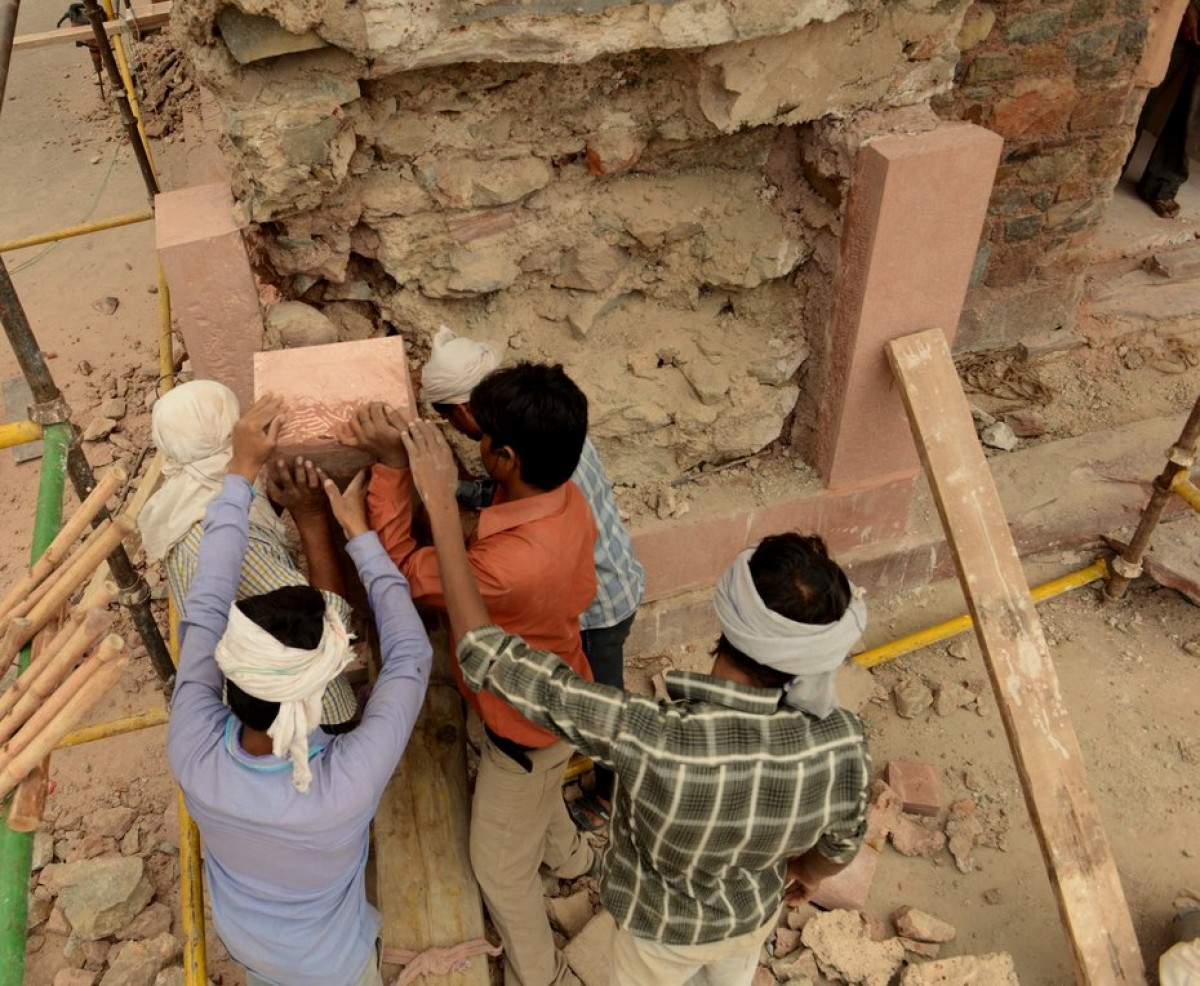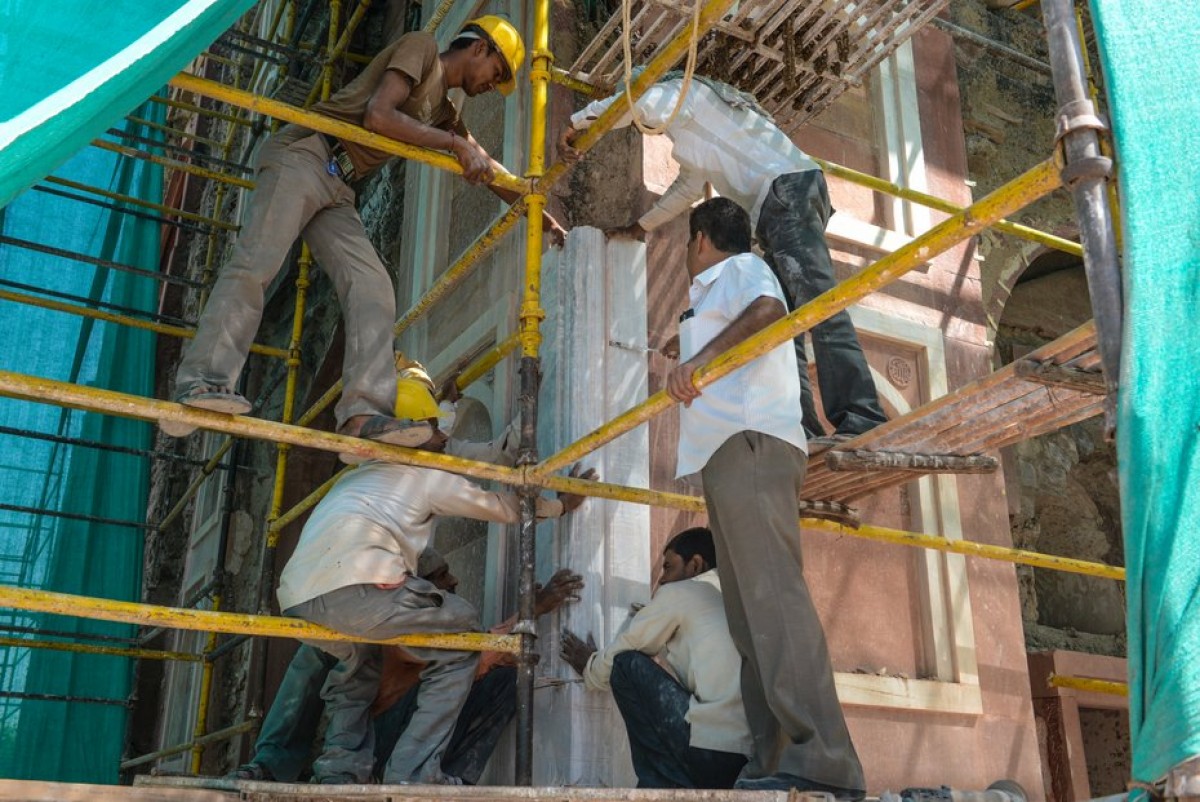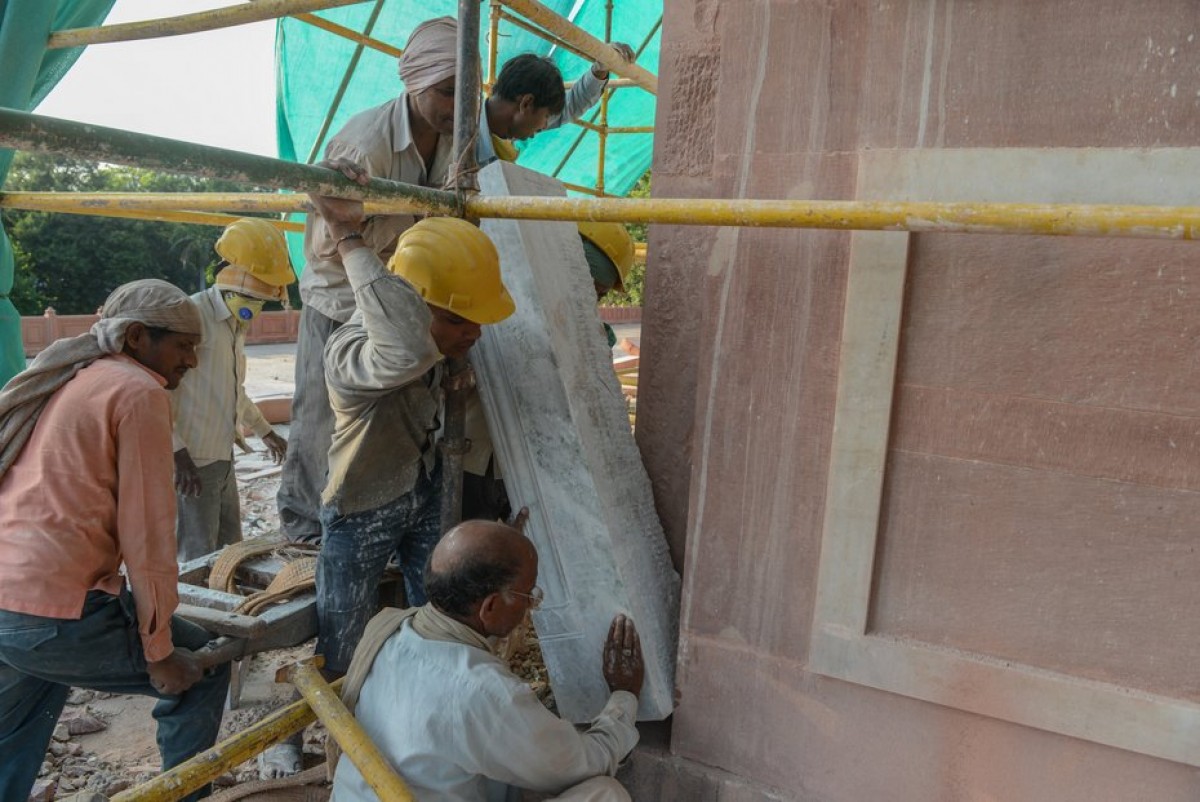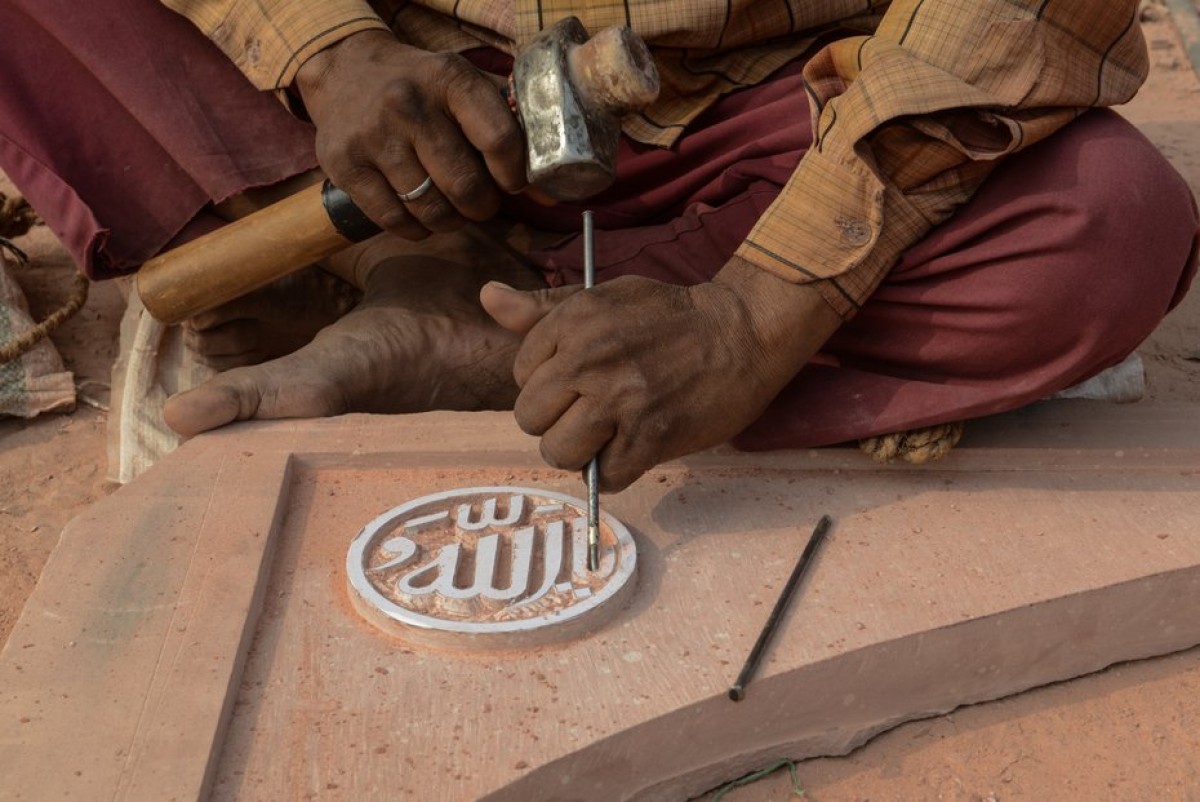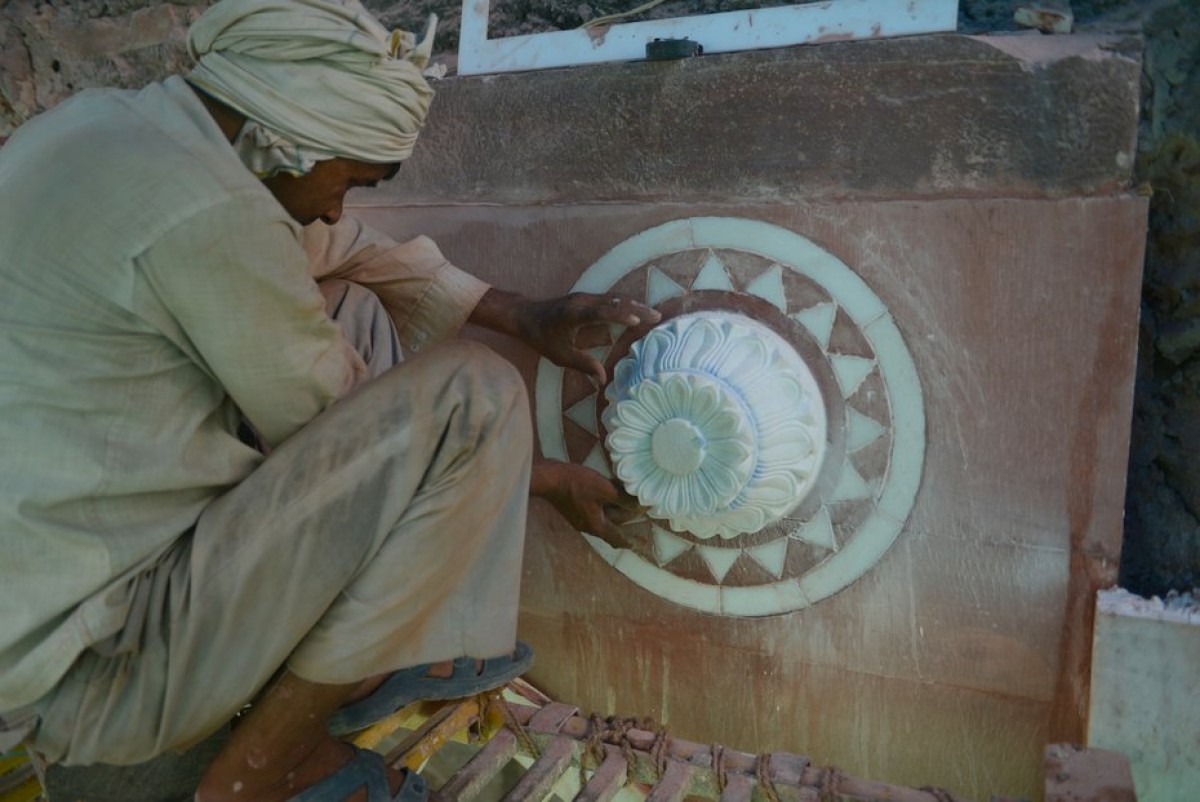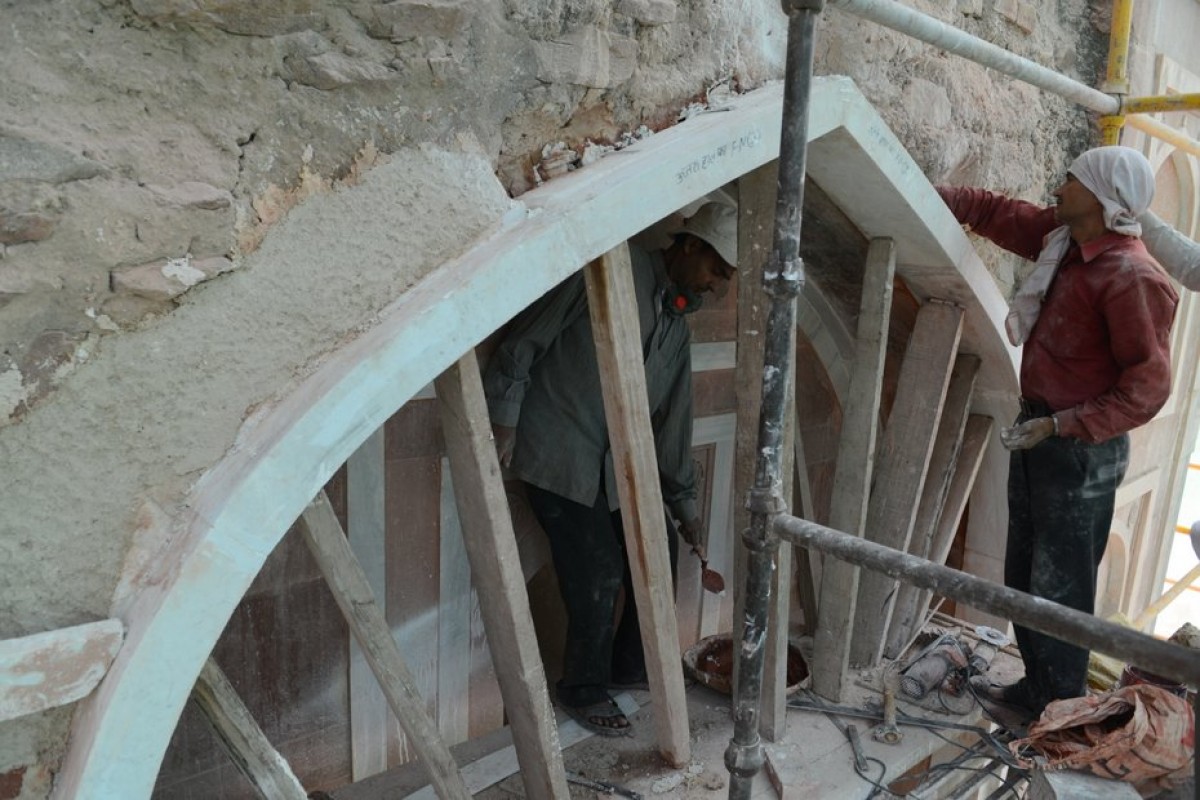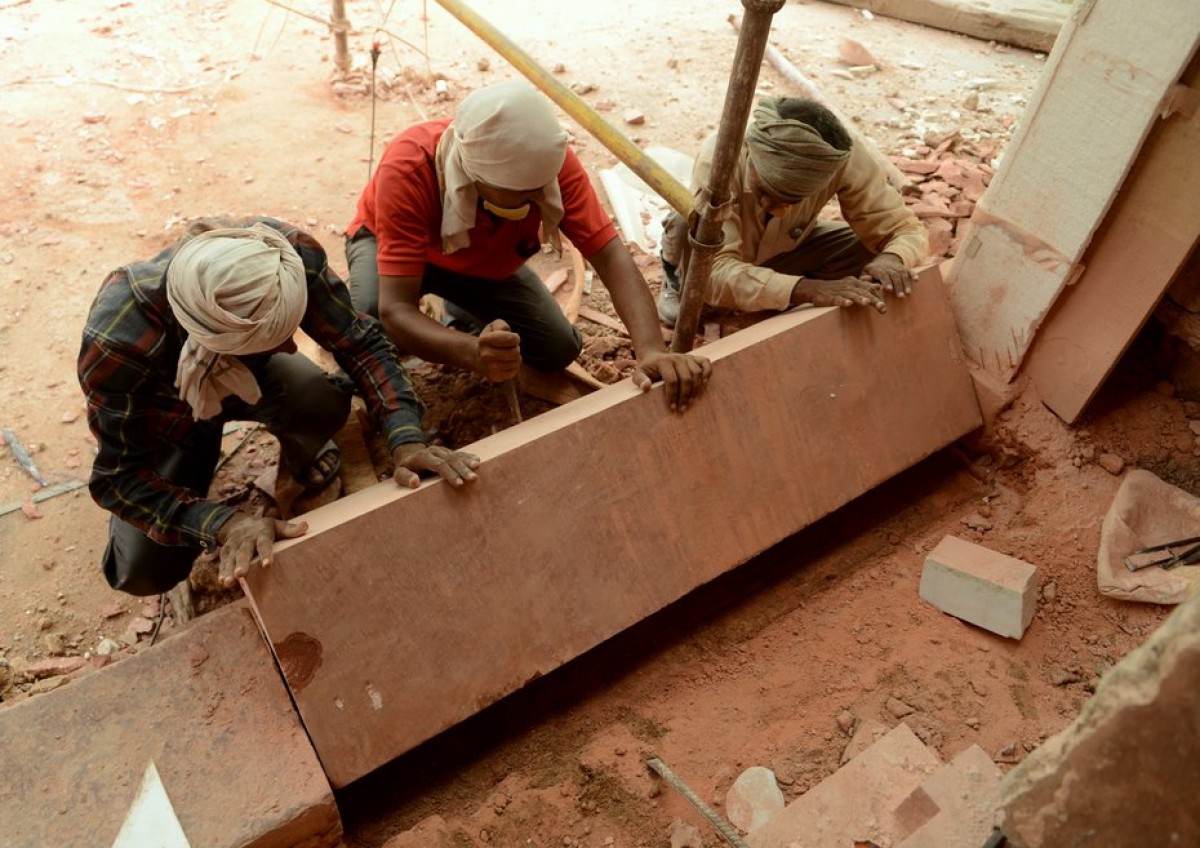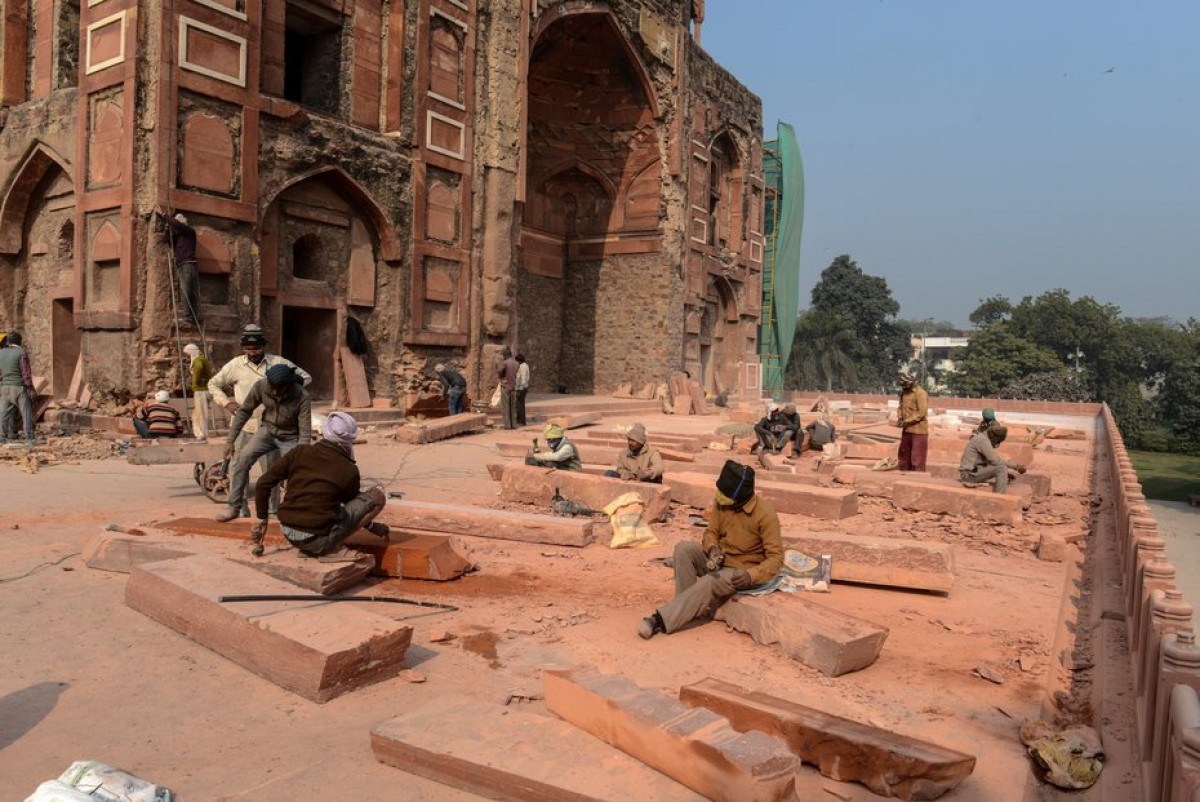
On account of the mausoleum being used as a quarry in the 18th century and marble and sandstone blocks stripped from here, the structure presents a ruinous appearance. With the protective stone cladding removed from large parts of the structure, the building is today in a poor state of preservation. Major repairs to portions of the building such as the archway to the grave chamber as well as to the four central bays on each facade were carried out in 1923 – 1926 by the ASI and have ensured preservation. These repairs have been retained during the conservation effort as examples of good repairs.
Unlike the bottom portion of the central bays’ the side bays as well as the upper levels of the central bays and the dome have largely been neglected during past repairs and patterns of cladding can still be discerned. Water logging in ledges has accelerated deterioration and the lack of support for stone elements that remain, have led to these rapidly deteriorating and falling away.
Architectural studies of all four facades based on in-situ evidence have been carried out to determine the patterns where stone blocks are missing. This has been followed by a study of archival images to determine additions and removal of stone blocks in the 20th century. These have led to the preparation of detailed proposals for conservation of the facades by restoration of the stone blocks where evidence of their original patterns is available. Conservation of the side bays has been completed and structural studies are being carried out to inform the conservation efforts to the central bay of the façade where large stone blocks hang precariously with no support.
























